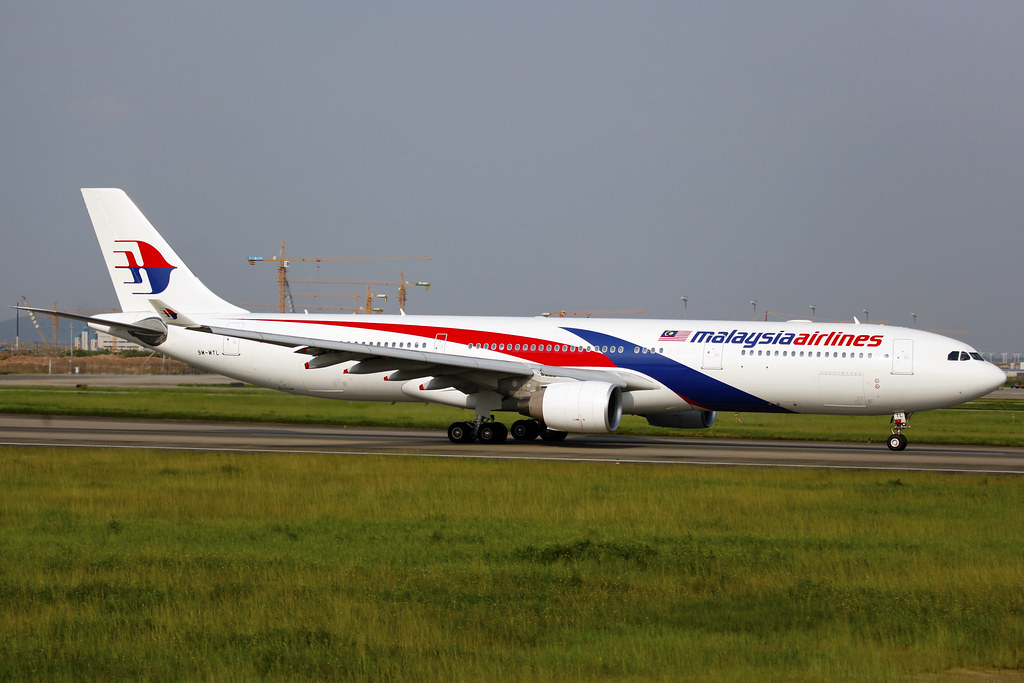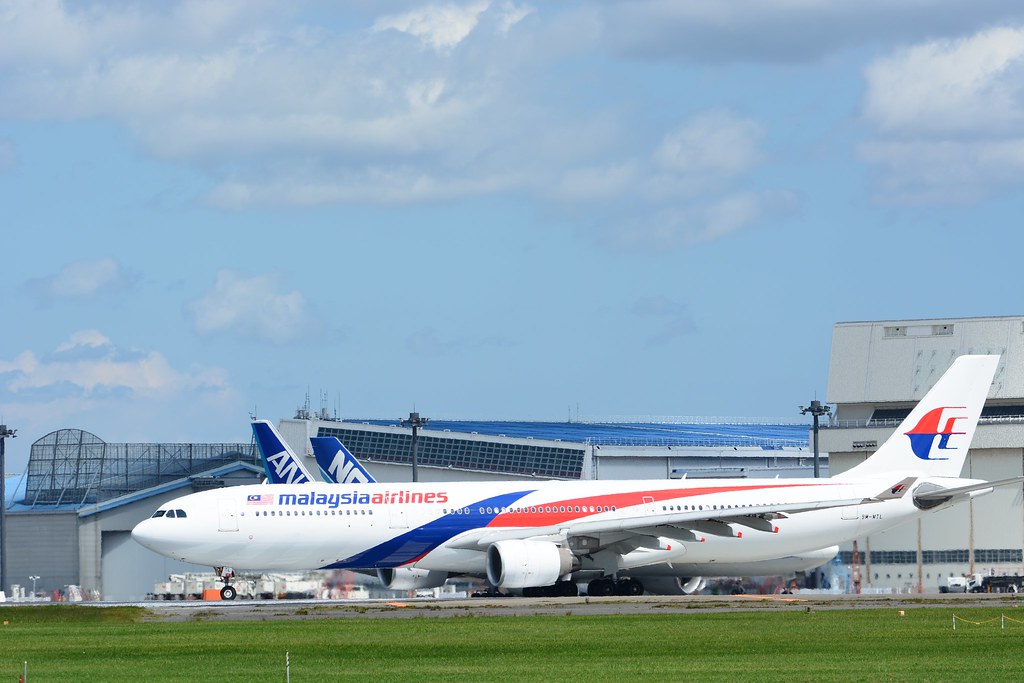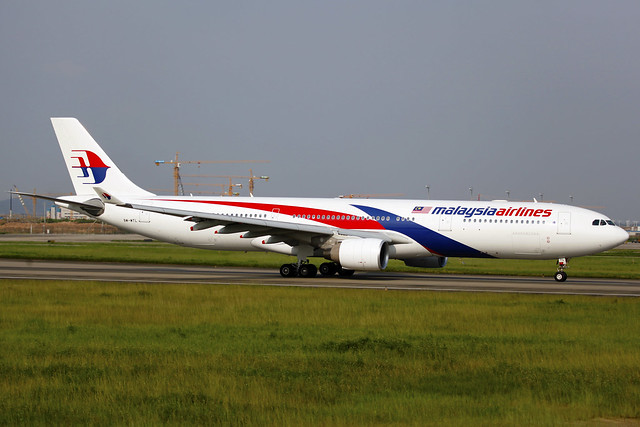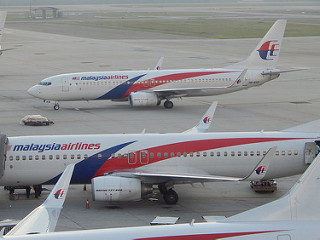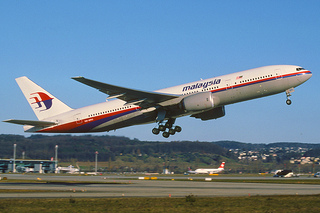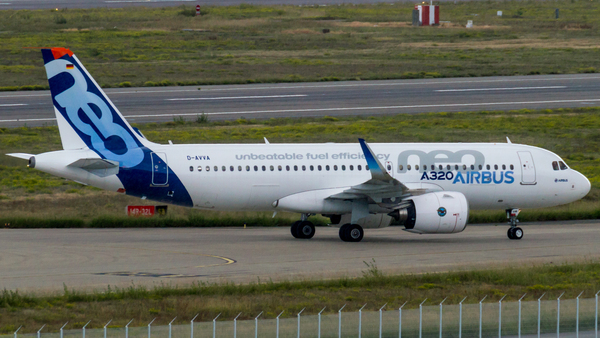Malaysian A333 at Melbourne on Sep 7th 2023, overran runway on takeoff
Last Update: November 11, 2025 / 10:25:09 GMT/Zulu time
Incident Facts
Date of incident
Sep 7, 2023
Classification
Incident
Airline
Malaysia Airlines
Flight number
MH-128
Departure
Melbourne, Australia
Destination
Kuala Lumpur, Malaysia
Aircraft Registration
9M-MTL
Aircraft Type
Airbus A330-300
ICAO Type Designator
A333
Airport ICAO Code
YMML
Australia's TSB opened a short investigation into the occurrence stating that no damage and no injuries occurred.
On Sep 18th 2023 a similiar occurrence happened, see Incident: Bamboo B789 at Melbourne on Sep 18th 2023, overran runway on takeoff.
Following the second occurrence Melbourne Airport stopped the works requiring a displaced runway threshold/end pending investigation.
On Dec 1st 2023 the ATSB released their preliminary report into both occurrences stating:
Runway 34, which was normally 3,657 m long, had been temporarily shortened by 1,568 m from the northern end, due to runway resurfacing works in progress (WIP). The flight crew of both aircraft did not identify that the shortened runway was in place and used the full length of runway 34 for their take-off performance calculations. As a result, the reduced-thrust engine settings used by both flight crews extended the take-off runs beyond the temporary runway end lights into a 450-metre buffer before the works limit line. The jet blast from each aircraft impacted runway unserviceability lights, works lights and marker cones. Personnel were active in the works area at the time of both occurrences, however none were physically injured as a result. There was no damage to either aircraft, or injuries to passengers, and both continued with their planned flights.
The ATSB summarized the sequence of events on 9M-MTL:
On the night of 7 September, a Malaysia Airlines Airbus A330-300, registered 9M-MTL was scheduled for a 2330 local time departure to fly as a scheduled passenger transport Melbourne to Kuala Lumpur, Malaysia as flight MH128. The first officer (FO) was the pilot flying (PF), and the captain was the pilot monitoring (PM).
The same flight crew had flown into Melbourne via runway 34 the previous night at about 2030, on another A330-300 aircraft. When approaching Melbourne, the flight crew reported that they checked the NOTAMs, which identified that taxiway E would be closed as a result of WIP that evening. Even though the NOTAM came into effect after they were scheduled to land, the crew contacted air traffic control (ATC), who confirmed that taxiway E could be used to vacate the runway. The aircraft landed without issue.
At around 2100 on 7 September, prior to leaving their hotel, the flight crew each downloaded an electronic copy of the flight briefing package. Both crew indicated they went briefly through the flight plan, including weather and fuel, before travelling to the airport. After arriving at the airport check-in, the flight crew also picked up a hard copy of the briefing package and immediately proceeded through to the aircraft.
The flight crew arrived at the aircraft at about 2245 and reported commencing with the company standard operating procedures (SOP) and checklist to prepare for the flight. This included another review of the flight briefing package.
One of the NOTAMs in the briefing package indicated that, at the time of the scheduled departure, runway 34 had the length reduced by 1,568 m from the northern end due to WIP. It also stated that the take-off run available (TORA) was 2,089 m. Both crew later stated that they were aware of the WIP as a result of checking the runway NOTAMs on approach to Melbourne the previous evening, but missed the NOTAM details while preparing for the occurrence flight. The FO reported going through the NOTAMs on their electronic flight bag (EFB) and indicated that the split screen display may have affected their ability to detect the shortened runway. The captain recalled going ‘briefly’ through the NOTAMs.
Both crew reported listening to the automatic terminal information service (ATIS)9 and writing down the key information. The FO filled out the operator’s predeparture take-off certificate, which had spaces for the time the ATIS was accessed, along with weather information from the ATIS and other flight data. The version of the ATIS that the flight crew accessed was information Oscar which stated ‘reduced runway length in operation’ and gave both the landing distance available (LDA) and the take-off run available (TORA) as 2,089 m. The ATIS audio was broadcast as follows:
MELBOURNE TERMINAL INFORMATION OSCAR, EXPECT GLS OR RNP APPROACH, RUNWAY
THREE FOUR DRY, REDUCED RUNWAY LENGTH IN OPERATION, LANDING DISTANCE
AVAILABLE TWO ZERO EIGHT NINER METRES, TORA TWO ZERO EIGHT NINER METRES,
WIND THREE THREE ZERO DEGREES ONE ZERO KNOTS, VISIBILITY GREATER THAN ONE
ZERO KILOMETRES, CLOUD FEW THREE THOUSAND FIVE HUNDRED FEET, TEMPERATURE
ONE ZERO, QNH ONE ZERO ZERO FIVE, ON FIRST CONTACT WITH MELBOURNE GROUND,
TOWER OR APPROACH, NOTIFY RECEIPT OF INFORMATION OSCAR.
The flight crew proceeded with independent performance calculations using the Airbus EFB software FlySmart. Neither of the crew recalled recognising, after listening to the ATIS, that the runway length was reduced and there were no notes relating to the runway length recorded on the predeparture take-off certificate. Both crew selected the full length of the runway for their independent calculations, which resulted in the selection of a reduced-thrust take-off. The FO reported then cross-checking the two sets of performance figures, which were the same.
ATC cleared the aircraft to push back from the gate at 2329 and the aircraft was subsequently cleared to taxi to holding point K (at taxiway K) at 2337. At 2343, ATC gave the aircraft clearance to line up on runway 34 and, about one minute later, cleared the aircraft for take-off. None of the communications between the flight crew and ATC mentioned the shortened runway, the works in progress or the current ATIS version, which had not changed since the flight crew accessed it.
The crew reported that, in accordance with the airline’s standard operating procedure, the FO (as PF) set the thrust and the captain then put a hand on the throttle levers. The captain reported that at approximately 100 kt, they observed that the runway end lights appeared ‘close’. The captain considered advancing the throttles to take-off/go-around (TOGA)13 thrust, but elected not to, as they felt it may distract or startle the FO. The PF reported that they did not notice the lights.
Aircraft flight data showed that upon reaching the calculated rotation speed (VR) of 159 kt, approximately 75 m before the runway end, the aircraft rotated (weight off the nose landing gear). Both crew recalled that the initial rate of rotation was slow and was subsequently corrected. The data recorded weight off the main landing gear, after the end of the runway, approximately 170 m before the works limit line. The data recorded 21 ft (6.4 m) radio altitude (RA) as the aircraft crossed the works limit.
Once the aircraft was stabilised at 10,000 ft, the crew briefly discussed the proximity of the runway end lights during the take-off. There was no indication of any issue with the aircraft and no contact from ATC to indicate any issue, so the crew continued the flight to Kuala Lumpur.
The airport operator, Australian Pacific Airport Melbourne (APAM) reported that it ceased the runway overlay works the day after the occurrence, pending the outcome of its initial investigation.
After a review of the existing risk assessment for displaced threshold runway works, APAM carried out a number of safety actions (see Safety action) and recommenced the works on 11 September.
There were no further incidents relating to the runway works reported until 18 September.
On Nov 11th 2025 the ATSB released their final report into both events concluding the probable causes were:
Contributing factors
- The flight crews of both aircraft did not recognise that reduced runway length operations were in effect at the time of departure, and conducted reduced-thrust take-offs based on the normal full runway length. This resulted in each aircraft taking off beyond the end of the shortened runway, in close proximity to active runway works.
- Acknowledging the known existing limitations of the NOTAM system, the NOTAM reviews by the flight crews of both aircraft were insufficient to identify that reduced runway length operations would be in effect during their respective departures.
- The Bamboo Airways flight crew were delayed preparing the aircraft for departure due to recurring power outages. As a result of increased workload and perceived time pressure, the crew did not conduct an additional review of the NOTAMs after boarding the aircraft.
- When accessing the Automatic Terminal Information Service through voice-ATIS, the flight crews of both aircraft only recorded the standard information required for take-off performance calculations and did not notice the aerodrome information regarding the reduced runway length.
- When lined up on the runway, the Bamboo Airways flight crew confirmed receipt of updated ATIS information without having accessed it. This was due to the flight crew's expectations that the ATIS change would not meaningfully affect their take-off.
- The Australian Aeronautical Information Publication requirement for flight crews to confirm automatic terminal information service (ATIS) identifier with air traffic control did not provide positive assurance that crews had received the information in full, which included essential information on aerodrome conditions, and there were no standard air traffic control communication procedures for providing this assurance. (Safety issue)
- The International Civil Aviation Organization (ICAO) Annex 11 requirement for flight crews to confirm ATIS identifier with air traffic control did not provide positive assurance that crews had received the information in full, which included essential information on aerodrome conditions, and there were no standard air traffic control communication procedures for providing this assurance. (Safety issue)
- The flight dispatchers for both flights had accounted for the reduced runway length in their take-off performance calculations, but did not highlight this information to the flight crews. Additionally, in the case of VN-A819, the dispatcher included a misleading crew briefing note that indicated there were no significant NOTAMs for the departure.
- Malaysia Airlines did not ensure that its flight dispatchers highlighted to flight crews all types of flight information most critical for flight safety. (Safety issue)
- Bamboo Airways did not ensure that its flight dispatchers highlighted to flight crews all types of flight information most critical for flight safety. (Safety issue)
- There were no visual aids installed that were designed to alert departing flight crews to the significant change in runway length. In addition, prior to commencing take-off, the flight crew of both aircraft did not see the runway works or equipment lights or did not recognise them as being associated with a reduction in runway length.
- The Part 139 (Aerodromes) Manual of Standards 2019 did not recommend, or provide standardised options for, movement area guidance signs or other visual aids to provide enhanced flight crew situational awareness of temporary changes to the runway length available for take-off. (Safety issue)
- The International Civil Aviation Organization (ICAO) Annex 14 standards and recommended practices did not recommend, or provide standardised options for, movement area guidance signs or other visual aids to provide enhanced flight crew situational awareness of temporary changes to the runway length available for take-off. (Safety issue)
Other factors that increased risk
- On first contact with the Melbourne ground controller in both occurrences, the flight crews did not confirm ATIS identifier as required, and the ground controllers did not challenge the omission. This removed a level of assurance that the flight crews had received current flight planning information.
- Although APAM had identified and implemented all the required and recommended risk controls for the prevention of a runway excursion on take-off, the level of detail recorded for its risk assessment provided limited assurance that the risks were fully understood, and did not allow for effective re-evaluation of original risk control assumptions.
Other findings
- The tower controller made an additional attempt to confirm the reduced runway length with the VN-A819 flight crew by requesting the ATIS identifier as the aircraft was lined up to take off. However, this ultimately had no effect on the crew’s recognition.
Metars:
YMML 071430Z 01011KT 9999 FEW025 09/04 Q1005=
YMML 071400Z 35014KT CAVOK 09/04 Q1005=
YMML 071330Z 35013KT CAVOK 10/04 Q1005=
YMML 071300Z 35009KT CAVOK 10/05 Q1005=
YMML 071230Z 35010KT 9999 FEW035 10/06 Q1005=
YMML 071200Z 35012KT 9999 FEW035 10/06 Q1005=
YMML 071130Z 35012KT 9999 FEW035 10/07 Q1005=
YMML 071100Z 35012KT 9999 FEW035 11/07 Q1005=
YMML 071030Z 35012KT 9999 FEW028 12/08 Q1004=
Related NOTAM:
H5678/23 NOTAMN
Q) YMMM/QMRLC/IV/NBO/A/000/999/3740S14451E005
A) YMML
B) 2309060000 C) 2309270600
D) 2309060000 TO 2309060600
2309130000 TO 2309130600
2309200000 TO 2309200600
2309270000 TO 2309270600
E) RWY 09/27 CLSD DUE WIP
REF TO METHOD OF WORKING PLAN 2023-4 STAGE R1
Incident Facts
Date of incident
Sep 7, 2023
Classification
Incident
Airline
Malaysia Airlines
Flight number
MH-128
Departure
Melbourne, Australia
Destination
Kuala Lumpur, Malaysia
Aircraft Registration
9M-MTL
Aircraft Type
Airbus A330-300
ICAO Type Designator
A333
Airport ICAO Code
YMML
This article is published under license from Avherald.com. © of text by Avherald.com.
Article source
You can read 2 more free articles without a subscription.
Subscribe now and continue reading without any limits!
Read unlimited articles and receive our daily update briefing. Gain better insights into what is happening in commercial aviation safety.
Send tip
Support AeroInside by sending a small tip amount.
Related articles
Malaysia A333 at Kuala Lumpur on Nov 9th 2019, gear problem on departure
A Malaysia Airlines Airbus A330-300, registration 9M-MTL performing flight MH-360 from Kuala Lumpur (Malaysia) to Beijing (China), was in the initial…
Malaysia B738 near Bintulu on Oct 21st 2025, loss of cabin pressure
A Malaysia Airlines Boeing 737-800, registration 9M-MXR performing flight MH-2742 from Kuala Lumpur to Bintulu (Malaysia), was enroute at FL350…
Malaysia B738 near Kuala Lumpur on Mar 18th 2025, cargo smoke indication
A Malaysia Airlines Boeing 737-800, registration 9M-MXN performing flight MH-720 from Jakarta (Indonesia) to Kuala Lumpur (Malaysia) with 115…
Malaysia B738 at Manila on Mar 14th 2025, engine problems
A Malaysia Airlines Boeing 737-800, registration 9M-MSB performing flight MH-705 from Manila (Philippines) to Kuala Lumpur (Malaysia), was climbing…
Malaysia B772 over Gulf of Thailand on Mar 8th 2014, aircraft missing, data indicate flight MH-370 ended west of Australia, first MH-370 debris identified, search ended
On Dec 20th 2024 Malaysia's Ministry of Transport (MOT) stated in an interview, that the government accepted a proposal by Ocean Infinity in…
Malaysia A333 at Kuala Lumpur on Sep 1st 2024, hydraulic problems, transponder problems
A Malaysia Airlines Airbus A330-300, registration 9M-MTB performing flight MH-66 from Kuala Lumpur (Malaysia) to Seoul (South Korea), was climbing…
Newest articles
ASL UK AT72 at East Midlands on Nov 14th 2025, tyre and runway damage on landing
An ASL Airlines UK Avions de Transport Regional ATR-72-212A freighter, registration G-OASB performing flight ABV-108 from Guernsey,CI to East…
TAP A20N at Lisbon on Nov 14th 2025, lightning strike
A TAP Air Portugal Airbus A320-200N, registration CS-TVP performing flight TP-862 from Lisbon (Portugal) to Venice (Italy), was climbing out of…
Subscribe today
Are you researching aviation incidents? Get access to AeroInside Insights, unlimited read access and receive the daily newsletter.
Pick your plan and subscribePartner

ELITE Simulation Solutions is a leading global provider of Flight Simulation Training Devices, IFR training software as well as flight controls and related services. Find out more.
SafetyScan Pro provides streamlined access to thousands of aviation accident reports. Tailored for your safety management efforts. Book your demo today
AeroInside Blog
Popular aircraft
Airbus A320Boeing 737-800
Boeing 737-800 MAX
Popular airlines
American AirlinesUnited
Delta
Air Canada
Lufthansa
British Airways
